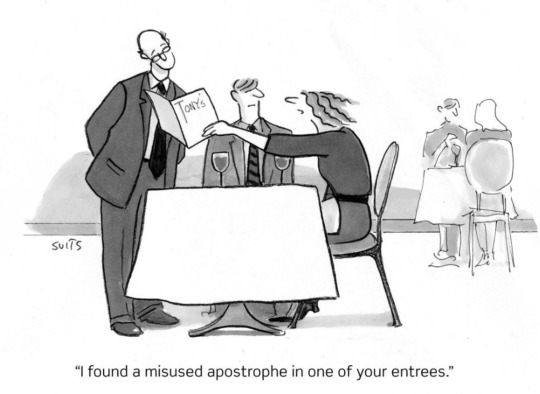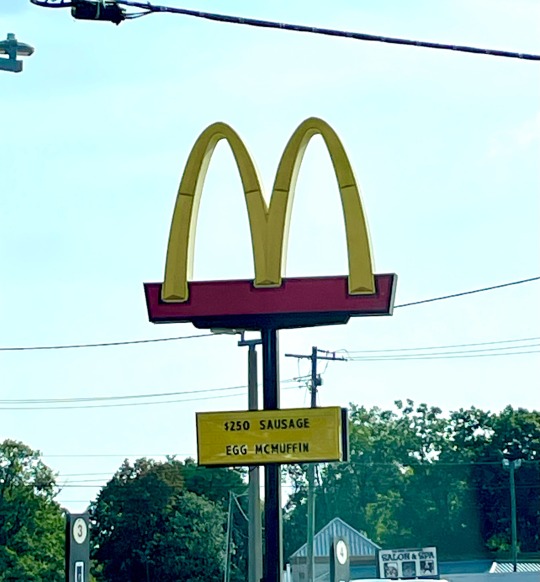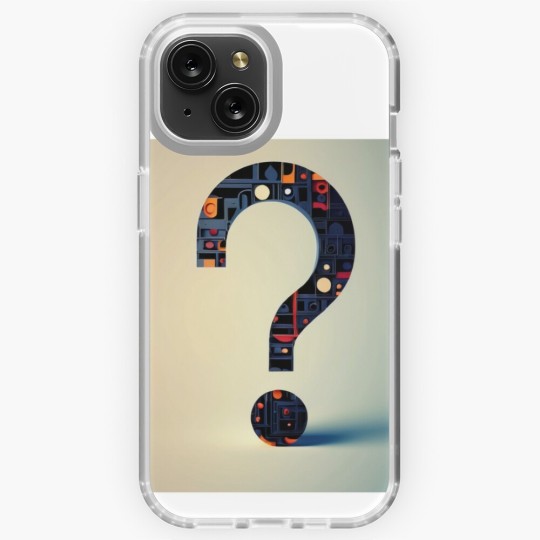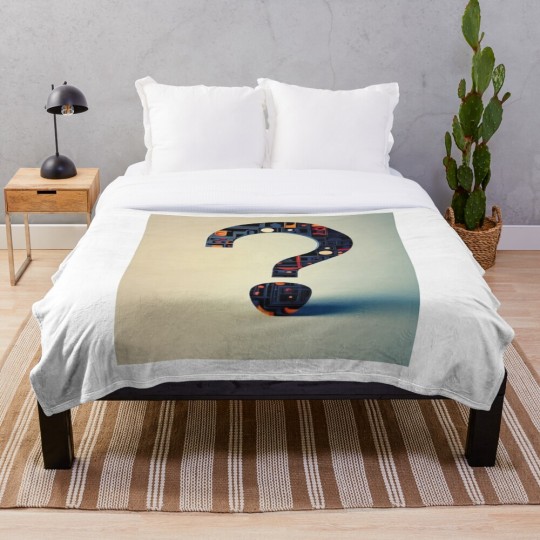#punctuation is important
Text
No shame! here’s proper punctuation with a simple format and the dictionary definitions because i used to be that writer who was where some of you are now. 💖

1. Full stop
A full stop is the punctuation name for a mark that is used to show the end of a sentence, as shown in this punctuation example:
'Lucy went clothes shopping. She bought a lovely new skirt.'
Full stops are used to indicate that it is the end of a sentence, usually communicating a complete point or thought. It highlights a new sentence is about to begin.
2. Commas
Commas is the punctuation name for a mark that aregreat for breaking down sentences, combining two clauses or showing us when to pause.
'Despite the fact I hate maths, I quite like learning about fractions.'
This shows how commas can add emphasis and tell the reader when to pause. Sometimes, commas can be misplaced. This is called a comma splice, where two independent clauses are connected by a comma, when they should really be separated with a full stop or semi colon or connected with a connective.
3. Question marks
Question marks simply indicate that the speaker is asking a question. They're used at the end of question (or interrogative) sentences.
'Do you still want to keep your teddy bear?'
4. Exclamation marks
Exclamation marks is the punctuation name for a mark that can change the meaning and tone of a sentence. They still end a sentence, but they can add emotion - whether that's excitement, anger or nervousness!
'Look, it's a cat!'
'I'm so nervous about my SATs exams!'
'I can't believe you just said that!'
All three of these sentences convey very different emotions using an exclamation mark, so it can be confusing. Yet imagine if they used a full stop instead - these emotions would be much harder to read and understand.
A sentence which needs an exclamation mark is called an exclamatory sentence.
5. Colons
A colon is the punctuation name for a mark that is used to connect two clauses.
'Never go out in the sun without sunscreen: you#ll damage your skin.'
They're also great for introducing a list of three or more things.
'I'm visiting four cities this summer: Rome, Florence, Paris, and Seville.'
6. Semicolons
Semicolons get a bad reputation for being difficult, but in truth, they're super handy!
You can use a semicolon to join 2 main (or independent clauses) which have equal importance. For example,
'Katie was hungry; she hadn't eaten all day.'
Semicolons show a closer relationship between the clauses than a full stop would show.
7. Apostrophes
Apostrophe is a punctuation mark that can be quite confusing for many children, but it's really important that children learn how to use it properly.
Apostrophes are used to identify something that belongs to someone or to show a letter or multiple letters are missing from a word. Yet as simple as this sounds, many children and adults often misplace or forget apostrophes, even putting them somewhere they shouldn't be altogether. The following sentence shows how to use an apostrophe for contractions, where letters are missing from "were not", "of the clock" and "cannot".
"We weren't meant to leave before 4 O'clock, so we can't go yet."
Apostrophes can also be used to show the possessive form of a singular noun.
"The student's job was to make sure no one touched the pet rabbit's breakfast."
With plural nouns where the word already has an 's' at the end, an apostrophe just gets added at the end.
"The girls' toy truck had broken."
If the word is plural and doesn't have an 's' at the end, again one can be added.
"The women's business meeting had been delayed."
One of the most common misuses of apostrophes is putting them in words which are just plural and don't show possession or contraction. For example, words such as pencils, ghosts, houses, or guests never need an apostrophe.
8. Dash
A dash is the punctuation name for a mark that used to separate words into statements. There are two common types of dashes: en dash and em dash which vary in length. The en dash is twice as long as a hyphen and is most commonly used to signify a range between two words or numbers, for example the date range:
1990-2014.
Meanwhile,the em dash can be used in place of a comma, parenthesis, or colon to enhance readability or emphasize the conclusion of a sentence. For example:
She gave him her answer—No!
8. Hyphen
This list of punctuation marks isn't exhaustive, but it does contain the most commonly used punctuation marks with names. For example:
Sarah had a part-time job that she worked on a Saturday
9. Parentheses
A parenthesis is a word, phrase, or sentence that is inserted into writing as extra information using brackets, commas or dashes. For example:
'James (who was terrified of heights) was going to ride the biggest rollercoaster in the theme park
When a whole sentence is written inside a parenthesis then the full stop will be included inside the parenthesis, for example - Please read this story. (You'll be amazed.). However, if the majority of a sentence is written outside the parentheses, then the full stop should also be used on the outside, for example, You are late (aren't you?).
10. Brackets
Brackets is the punctuation name for a mark that is a curved symbol that looks like () and they are used to separate non-essential or additional information from a sentence. For example:
She finally answered (after taking five minutes to think) that she didn’t understand the question.
11. Quotation marks
Quotation marks is the punctuation name for a mark that is the primary type of punctuation used in quotes. These are inverted commas that are used as either single (‘ ’) or double (“ ”) sets. They are used either to mark the beginning and end of a title or quoted passage. For example:
Walking across the beach Mary said, "the weather is very sunny today".
12. Ellipsis
An ellipsis(plural ellipses) is a punctuation mark made up of 3 dots. Ellipses are commonly used to indicate the omission of words, lines or paragraphs from a quoted passage. For example:
'Today...we are proud to announce our new product.'

Dictionary version [better version In my opinion]
What is a typographical symbol?
The term typographical symbol, or any other number of phrases, refers to a character or symbol that isn’t considered to be a punctuation mark but may still be used in writing for various purposes. Typographical symbols are generally avoided in formal writing under most circumstances. However, you may see typographic symbols used quite a bit in informal writing.
Typographical symbol examples
The following examples show some ways that a writer might use typographical symbols. Keep in mind that some of these sentences may not be considered appropriate in formal writing.
The frustrated actor said she was tired of her co-star’s “annoying bull****.”
For questions, email us at [email protected]!
The band had five #1 singles on the American music charts during the 1990s.
My internet provider is AT&T.
Period (.)
A period is used to end a declarative sentence. A period indicates that a sentence is finished.
Today is Friday.
Unique to them, periods are also often used in abbreviations.
Prof. Dumbledore once again awarded a ludicrous amount of points to Gryffindor.
Question mark (?)
The question mark is used to end a question, also known as an interrogative sentence.
Do you feel lucky?
Exclamation point (!)
The exclamation point is used at the end of exclamations and interjections.
Our house is haunted!
Wow!
Comma, colon, and semicolon
Commas, colons, and semicolons can all be used to connect sentences together.
Comma (,)
The comma is often the punctuation mark that gives writers the most problems. It has many different uses and often requires good knowledge of grammar to avoid making mistakes when using it. Some common uses of the comma include:
Joining clauses: Mario loves Peach, and she loves him.
Nonrestrictive elements: My favorite team, the Fighting Mongooses, won the championship this year.
Lists: The flag was red, white, and blue.
Coordinate adjectives: The cute, happy puppy licked my hand.
Try out this quiz on the Oxford comma!
Colon (:)
The colon is typically used to introduce additional information.
The detective had three suspects: the salesman, the gardener, and the lawyer.
Like commas, colons can also connect clauses together.
We forgot to ask the most important question: who was buying lunch?
Colons have a few other uses, too.
The meeting starts at 8:15 p.m.
The priest started reading from Mark 3:6.
Semicolon (;)
Like the comma and the colon, the semicolon is used to connect sentences together. The semicolon typically indicates that the second sentence is closely related to the one before it.
I can’t eat peanuts; I am highly allergic to them.
Lucy loves to eat all kinds of sweets;lollipops are her favorite.
Hyphen and dashes (en dash and em dash)
All three of these punctuation marks are often referred to as “dashes.” However, they are all used for entirely different reasons.
Hyphen (-)
The hyphen is used to form compound words.
I went to lunch with my father-in-law.
She was playing with a jack-in-the-box.
He was accused of having pro-Britishsympathies.
En dash (–)
The en dash is used to express ranges or is sometimes used in more complex compound words.
The homework exercises are on pages 20–27.
The songwriter had worked on many Tony Award–winning productions.
Em dash (—)
The em dash is used to indicate a pause or interrupted speech.
The thief was someone nobody expected—me!
“Those kids will—” was all he managed to say before he was hit by a water balloon.
Test your knowledge on the different dashes here.
Parentheses, brackets, and braces
These pairs of punctuation marks look similar, but they all have different uses. In general, the parentheses are much more commonly used than the others.
Parentheses ()
Typically, parentheses are used to add additional information.
I thought (for a very long time) if I should actually give an honest answer.
Tomorrow is Christmas (my favorite holiday)!
Parentheses have a variety of other uses, too.
Pollution increased significantly. (See Chart 14B)
He was at an Alcoholics Anonymous (AA) meeting.
Richard I of England (1157–1199) had the heart of a lion.
Square brackets []
Typically, square brackets are used to clarify or add information to quotations.
According to an eyewitness, the chimpanzees “climbed on the roof and juggled [bananas].”
The judge said that “the defense attorney [Mr. Wright] had made it clear that the case was far from closed.”
Curly brackets {}
Curly brackets, also known as braces, are rarely used punctuation marks that are used to group a set.
I was impressed by the many different colors {red, green, yellow, blue, purple, black, white} they selected for the flag’s design.
Angle brackets <>
Angle brackets have no usage in formal writing and are rarely ever used even in informal writing. These characters have more uses in other fields, such as math or computing.
Quotation marks and apostrophe
You’ll find these punctuation marks hanging out at the top of a line of text.
Quotation marks (“”)
The most common use of quotation marks is to contain quotations.
She said, “Don’t let the dog out of the house.”
Bob Ross liked to put “happy little trees” in many of his paintings.
Apostrophe (‘)
The apostrophe is most often used to form possessives and contractions.
The house’s back door is open.
My cousin’s birthday is next week.
It isn’t ready yet.
We should’ve stayed outside.
Slash and ellipses
These are two punctuation marks you may not see too often, but they are still useful.
Slash (/)
The slash has several different uses. Here are some examples:
Relationships: The existence of boxer briefs somehow hasn’t ended the boxers/briefs debate.
Alternatives: They accept cash and/or credit.
Fractions: After an hour, 2/3 of the audience had already left.
Ellipses (…)
In formal writing, ellipses are used to indicate that words were removed from a quote.
The mayor said, “The damages will be …paid for by the city … as soon as possible.”
In informal writing, ellipses are often used to indicate pauses or speech that trails off.
He nervously stammered and said, “Look, I … You see … I wasn’t … Forget it, okay.”

I don’t do not own any information listed above. This can all be found on google/chrome/safari
Divider credits go to @cafekitsune
#punctuation is important#punctuation mark#no punctuation#punctuationverse#zero punctuation#fanfic writer#writing tips#for writers#writing#fanfiction writer#writing advice#writer things#writer tips#writer problems#writers and poets#support fanfic writers#writerscommunity#writers on tumblr#writing help#writing reference#writblr#how to write#writing tools
136 notes
·
View notes
Text
Reblog for a larger sample size!
#exclamation mark#symbols#?#!#.#;#+#•#%#symbol#polls#tumblr polls#poll#punctuation is important#!!!#???#!!!!#????#tag#is there a limit?#to how many tags#you#can add?#eppfprpg#epprbcu#exclamania#Exclamation Point PFP RPG Blog Cinematic Universe#!CU#punctuationverse#punctuation
58 notes
·
View notes
Text

Editor Life
#editors#editing#copyediting#english teacher#authors#writers#grammar police#punctuation is important
12 notes
·
View notes
Text

inflation is worse than i thought.
#punctuation#punctuation is important#LMFAO#i was at a red light and took this i promise i was safe but look at it
3 notes
·
View notes
Text
Can someone just… explain semicolons to me??
#writing#punctuation is important#grammar#linguistics#punctuation mark#seriously#like#is it a colon?#Is it a comma?#MAKE UP YOUR MIND
2 notes
·
View notes
Text
I've seen it in the poems and the sands. I've pleaded with the powers and their plans. I tried to rewrite it but I can't it's the history, the history of man. I stay up, you're sleeping like a lamb. I beg you, and you don't understand I hold on I try to hold your hand I save you a seat and then you say you want to stand so you'll lose me, the best you'll ever have. it's the history, the history of man.
6 notes
·
View notes
Text

The whole evening was yummy…
~sleepy smile~
12 notes
·
View notes
Text
Meanwhile, Not in Scotland

Why are they standing in the rose bush? Surely there’s somewhere more practical to be standing? Or a tree to lean on? Or something? I realise there’s no refuge to be found in the miniature castle, but there does appear to be a lawn! GET IT TOGETHER SKYE O’MALLEY AND GUY WITH A FAKE TAN!
Indomitable and bold in an era of royalty and rogues, Skye O'Malley is a woman who embraces her unbridled sensuality as valiantly as she fights for her children, her lovers, her empire. A woman of justice and honor, she will match wits with and challenge the most dangerous and powerful woman of her time: Queen Elizabeth I.
Though Skye is the object of every man's fantasy, only a handful have had the thrill of tasting her enticing passions men whose own daring adventures match her exotic forays into a world of lust, longing, and remarkable destiny. Skye's is a stunning tale that reaches from the emerald hills of Ireland to the lush palaces of Algiers to the helm of a shipping empire, where she will wage her greatest battle for love and vengeance against the crown itself.
I realised, as I read this, a great many things.
If you want to write about Grace O’Malley, write about Grace O’Malley.
Elizabeth I will crush her like a tiny insect. Why? Because she’s Elizabeth I. SHE CRUSHED SPAIN. Some pirate with a shipping empire isn’t going to bother her too much. She thinks foul scorn that Parma or Spain or any prince of Europe should dare to invade the borders of her realm! By which I mean she will kill you. A LOT.
It’s nice to see a heroine who is a bit of goer and none the worse for it.
PUNCTUATION IS A THING.
#bertrice small#skye o'malley#miniature castle#not having sex in a rosebush should be a no-brainer#punctuation is important#meanwhile not in scotland
0 notes
Text
Punctuate only with motive
When we remember that readers have to process every keystroke on the page, it becomes clear that we should not punctuate when the marks accomplish nothing.
1 note
·
View note
Text




#fiction editor#copyediting#developmental editing#line editing#grammar#punctuation is important#writing buddies#aspiring writer#creative writing#writeblr#writers on tumblr#writing#writer problems#writers#fanfiction#original fiction
0 notes
Text

0 notes
Text
Punctuation in writing might seem like those tiny details you learned in school and promptly forgot, but hold on—those little marks might seem insignificant, but they have the power to turn a chaotic jumble of words into a symphony of meaning.
0 notes
Text
Phenomenal fact #806
the greatest piece of punctuation is the rarely used interrobang. it replaces the “!?” at the end of a sentence. it was invented in 1962 by martin k speckter.

#folk music#live music#music#folk band#grammar#punctuation is important#english#fun facts#random facts#fact of the day#interesting facts#facts#yes this blog is run by an#english teacher
1 note
·
View note
Photo





(via "Embrace the Unpredictable" Framed Art Print for Sale by Molly62)
#findyourthing#redbubble#question mark#punctuation is important#writing#punctuation#written#thoughts#mind#mind games#abstract#wall hanging#home decor#reading
0 notes
Text

1 note
·
View note
Text
My inability to remember to use punctuation marks is going to kill me eventually.
0 notes